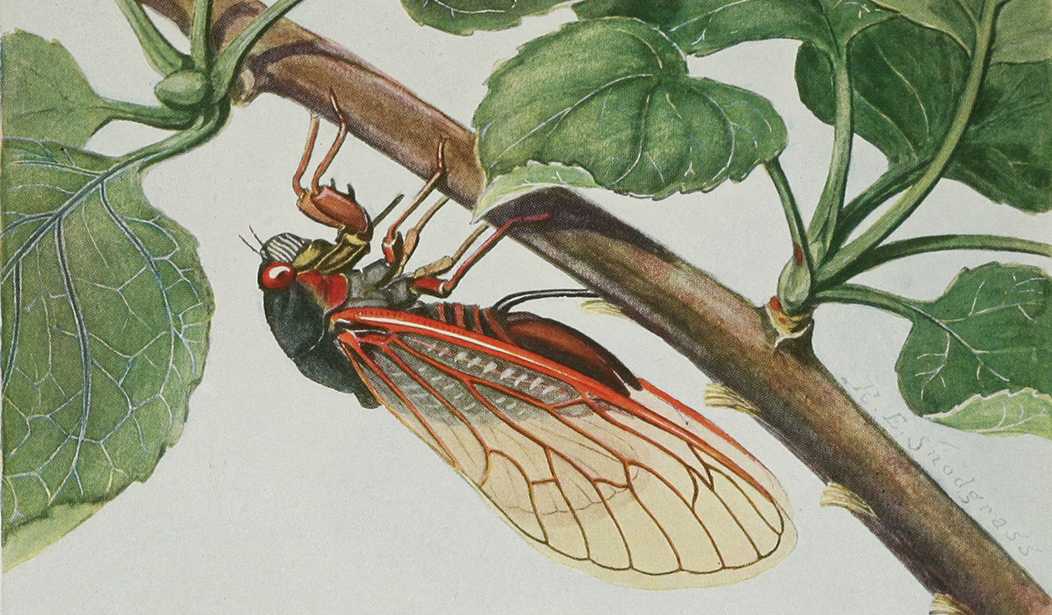Sorry, you folks down there in the lower 48, but it looks like a lot of you in the Midwest and the South will be seeing a literal plague of cicadas this summer. In an event that hasn't happened since the days of Thomas Jefferson, much of the country will be seeing a double-hatch of 17-year cicadas.
Trillions of periodical cicadas are due to make an appearance across the Midwest and Southeast of America this spring, after spending more than a decade burrowed underground. This year, two broods of flying cicadas will emerge at the same time, and it will be the first time they have emerged simultaneously since 1803.
Periodical cicadas have an incredibly long life cycle, unlike their non-periodical brethren which mature each summer. After hatching, the immature periodical cicadas, called nymphs, spend either 13 or 17 years underground, feeding on roots, before squirming their way above ground and transforming into adult cicadas.
The 17-year Brood XIII is due to emerge in Northern Illinois, and the 13-year Brood XIX will emerge in parts of the southeastern US. Both events are due to begin in late April. And for those in the right spot, there is a small area where the broods may potentially overlap. According to researchers at the University of Connecticut, the greatest likelihood of contact between the two broods is in small patches of woodland around Springfield, Illinois.
Someone notify the UN — they want people to eat less meat, and here, boy, we have a bunch of protein just crawling out of the ground.
See Related: The United Nations Wants You to Stop Eating So Much Meat
This historic event is bound to bug folks and will make a lot of people fly off the handle. But there are some things you can do to prepare for the six-legged invaders:
- A light source can draw insects away from doors and windows. I recommend a larva lamp.
- Vigorous physical activity in the area of an infestation activates the cicada's predator evasion instincts. I recommend dancing a brisk jitterbug.
- Some insects are natural enemies of cicadas, and you should encourage them — they are effective deter-ants.
- There's always the option to just accept the cicadas, as one would a neighbor, and to even appreciate their natural presence — beauty is, after all, in the eye of the bee-holder.
- In the end, if it comes down to the point where eating these bugs is the only way to lessen an infestation, then you must choose the lesser of two weevils.
Things could be worse. At least we can still breathe.
See Related: To Combat Climate Change, Humans Must Stop... Breathing? Really?
There will be people who will blame this event on global worming. But there's no evidence of that; people who make panicked, unfounded assertions like this are just a bother to bee around.
We can take some comfort in knowing this won't happen again for a while.
The next time Broods XIX and XII emerge together it will be 2245. The question is: what kind of world will they be coming out to?
It's impossible to imagine what the world might look like in 2245. By then, people may be able to deploy a biological agent tailored to the cicadas — maybe a kind of tubercu-locust. But whatever humans are around in that far future, in that year, they will have the chance to witness the cicada's ant-ticks, just as much of the U.S. will this year.
People come and go, and nations rise and fall, but cicadas, it seems, are forever.














Join the conversation as a VIP Member